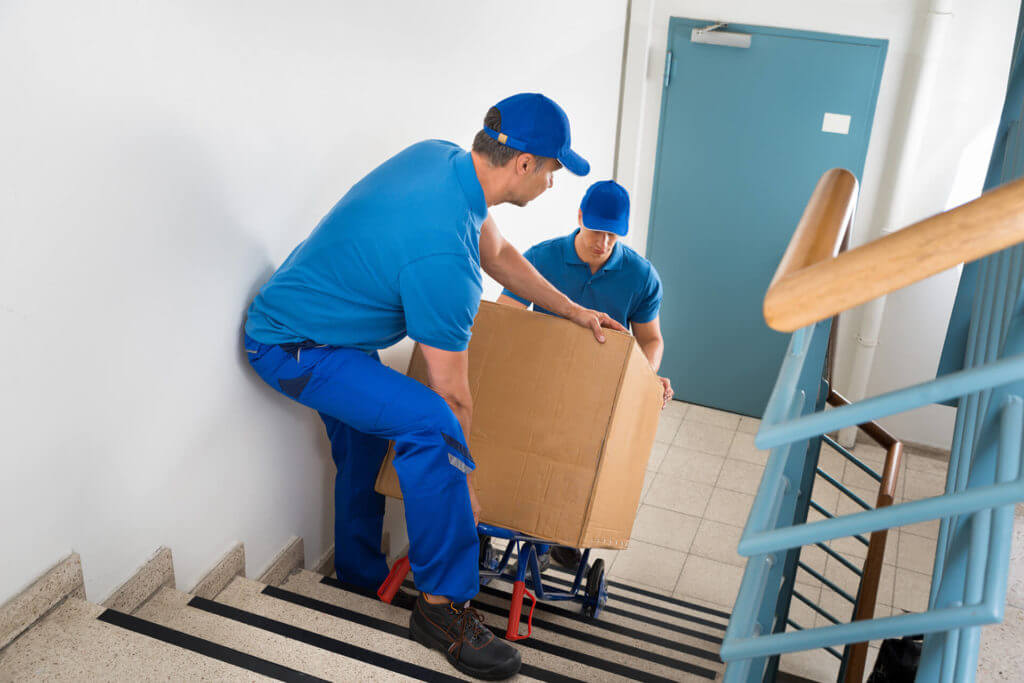Preparing for a long-distance move brings excitement, but the prospect of moving large items can add a dose of apprehension. Safely transporting your bulky possessions across vast distances requires careful planning and execution. In this blog, we will guide you through expert tips and strategies to ensure the secure relocation of your belongings.


When moving large items, careful planning and execution are essential for a smooth relocation. Gathering the necessary packing materials, using appropriate padding and protection, and securing loose parts and fragile elements are crucial steps. Whether you choose to hire professional long-distance movers or tackle the move yourself, consider the need for special insurance and any weight restrictions or regulations.
Relocating big and bulky belongings can be physically demanding and pose a risk of injuries if not approached with proper planning and precautions. To ensure a smooth and safe relocation, it is essential to plan ahead before attempting to transport these cumbersome belongings.
By taking the necessary precautions, you can significantly reduce the chances of accidents, injuries, and other relocation mistakes. In this guide, we will delve into these essential steps, providing you with practical relocation tips and strategies for avoiding injuries and ensuring a successful relocation of your big things.
When preparing to move large items, it is crucial to evaluate their size, weight, and dimensions. Take measurements of each item, including its height, width, and depth. This information will help you determine how these belongings will fit into a moving truck and whether any special accommodations or equipment are necessary.
Additionally, consider the weight of each item and assess whether you have the required manpower or tools to lift and transport them safely. By thoroughly evaluating the size, weight, and dimensions of your large items, you can plan the logistics of your relocation more effectively, reducing the risk of accidents and injuries.
To avoid unexpected challenges during your relocation, it is essential to measure doorways, hallways, and staircases in both your current and future locations. Measure the width, height, and any narrow passages or sharp turns that might affect the large items.
This step is crucial in ensuring that your belongings can go through these areas without causing damage or getting stuck. By taking precise measurements and planning accordingly, you can avoid last-minute surprises and make necessary arrangements, such as disassembling certain belongings or finding alternative routes, to ensure a smooth and injury-free relocation process.
Creating a detailed inventory of your bulky things is essential for both organization and planning purposes. As you prepare for your relocation, write down each item along with its corresponding dimensions and weight. This inventory will serve as a useful reference, allowing you to keep track of your belongings and plan the logistics of packing, loading, and unloading.
Moreover, it will help you allocate the appropriate space in your relocation truck and ensure that all necessary equipment and supplies are ready. By creating a comprehensive inventory, you can streamline the relocation process, minimize the risk of losing or damaging things, and maintain a systematic approach to your relocation.

When preparing for a relocation, decluttering and streamlining your belongings can greatly simplify the process and make your relocation easier. One essential step is to focus on decluttering and organizing your things. Assess each item individually and consider its value, functionality, and relevance in your new space.
Identify belongings that are no longer needed or no longer serve a purpose in your life and get rid of them. By decluttering, you can reduce the amount of furniture pieces, appliances, and other possessions you need to transport, making your move more efficient and cost-effective.
Additionally, decluttering allows you to create a more organized and spacious living environment in your new home, providing you with a fresh start and a sense of clarity. Watch this video if you need more tips on how to declutter.
As you go through the decluttering process, you will likely come across belongings that no longer have a place in your life. These unwanted items can be sold, donated, or responsibly disposed of, depending on their condition and usability. If the item is in good condition, consider selling it to recoup some of the relocation expenses or to make a little extra cash.
You can utilize online marketplaces such as Craigslist, local classified ads, or even organize a garage sale. Alternatively, if the item is still usable, consider donating them to charities or non-profit organizations that accept bigger items. This way, you can give back to the community and help those in need.
Finally, if the item is damaged or beyond repair, it’s important to dispose of it properly. Research local waste management guidelines or recycling centers to ensure the belongings are disposed of in an environmentally friendly manner.

Properly packing and protecting your belongings is crucial for a successful and damage-free relocation. Taking the time to carefully pack your large items ensures their safety during transportation and reduces the risk of any unwanted surprises upon arrival at your new home.
By following the necessary steps and using the right techniques, you can pack and protect your belongings effectively, giving you peace of mind throughout the relocation process.
Before you start packing, it’s important to gather all the necessary packing materials and supplies. This includes sturdy cardboard boxes, packing tape and peanuts, bubble wrap, and relocation blankets.
Having these supplies readily available will make the packing process more efficient and ensure that your belongings are properly protected during transit. Take the time to organize and gather all the materials you’ll need, saving you from any last-minute scrambling and ensuring a smooth and organized packing experience.
To ensure the safe transport of your belongings, provide enough proper padding and protection. Use blankets, moving pads, or furniture covers to wrap your belongings, safeguarding them from scratches, dents, or other potential damage.
Additionally, utilize bubble wrap, packing peanuts, or foam sheets to cushion delicate surfaces and fragile components. Secure the wrapping and padding with packing tape or stretch wrap to keep them in place during transit.
Take the time to secure any loose parts or fragile elements to prevent damage during transportation. Disassemble any detachable components and wrap them individually with protective materials like bubble wrap or packing paper.
Use packing tape or zip ties to secure these parts to the main item, ensuring they stay in place and minimizing any risks. Pay special attention to fragile elements such as glass surfaces or delicate decorations, providing extra padding or specialized protective wraps.
Hiring professional cross-country movers can greatly simplify and streamline your relocation process. Moving across the country involves numerous logistical challenges, and entrusting these tasks to experienced professionals can save you time, effort, and potential relocation stress.
With its expertise and specialized knowledge, a long-distance moving company can efficiently handle the complexities of long-distance moves, ensuring a smooth and successful transition to your new home. By hiring professional long-distance moving services, you can focus on other aspects of your relocation and have peace of mind knowing that your belongings are in capable hands.
When it comes to cross-country relocation, hiring professional movers offers several advantages, so start looking for long-distance movers near me. First and foremost, professionals have extensive experience in relocations and are well-versed in the intricacies involved.
They possess the necessary expertise to navigate the logistics, plan efficient routes, and ensure the safety and security of your belongings throughout the journey. Additionally, professional movers are equipped with the appropriate tools, equipment, and packing materials to handle big, delicate, or valuable things.
By investing in professional packing services, you can benefit from insurance coverage that protects your belongings in case of any unforeseen incidents.

Relocating large items can be a challenging task, but with the proper techniques and careful planning, you can ensure a smooth and successful relocation. By following the tips provided, you’ll be well-prepared to tackle the task with confidence.
However, if you don’t know how to move heavy items, remember that our experienced team at Trico Long Distance Movers is here to help. Contact us for reliable and efficient relocation services, and let us take care of the logistics while you focus on settling into your new home. Trust the experts for a seamless relocation that prioritizes the safety and security of your belongings.
Deciding whether to hire professional movers or move bulky things yourself depends on various factors. Hiring professionals offers many benefits, such as expertise, efficiency, and reduced physical strain. They have the necessary equipment and experience to handle your belongings safely.
However, if you have the proper equipment, adequate manpower, and are confident in your abilities, doing it yourself can save costs. Consider your relocation budget, time constraints, and the complexity of the relocation when making this decision.
Finding reliable and trustworthy relocation companies requires research and due diligence. Start by asking for recommendations from friends, family, or local real estate agents. Read online reviews and check the company’s licensing and insurance credentials.
Request detailed quotes from multiple companies, comparing their services and pricing. Verifying their reputation and professionalism will help you choose a reliable relocation company for your valuable possessions.
While regular packing materials may be suitable for some larger belongings, it’s important to consider their strength and durability. Fragile or valuable things may require specialized packing materials such as heavy-duty boxes, reinforced packing tape, and extra layers of protection like bubble wrap or furniture blankets.
Relocating without professional assistance can pose several risks. Improper lifting techniques and inadequate equipment can lead to personal injuries or property damage.
Lack of experience in securing and transporting large items can result in breakage or other damage during transit. Additionally, without professional guidance, there may be challenges in navigating narrow doorways, staircases, or other obstacles.
It is highly recommended to consider special insurance coverage for valuable belongings during a move. While standard moving insurance may provide some coverage, it’s crucial to review the policy and assess whether it adequately protects your valuable possessions.
Valuable things such as artwork, antiques, or high-value electronics may require additional insurance coverage. Consult with your insurance provider or the moving company to understand the available options and ensure proper protection for your valuables.
Booking professional movers for large item relocation should be done well in advance to secure their services. As soon as you have a confirmed relocation date, start reaching out to companies to inquire about their availability.
Peak relocation seasons, such as summer months or weekends, can be particularly busy, so it’s advisable to book several weeks or even months in advance. By planning ahead and reserving the services of professional movers early, you increase the likelihood of securing their assistance for your preferred dates.
Disassembling a big item for a move can be necessary, especially if it won’t fit through doorways or tight spaces in its assembled state. Things like furniture, exercise equipment, or large appliances may need to be disassembled to ensure a smooth and safe relocation.
It’s important to keep track of the disassembled parts, securely pack and label them, and take photographs or notes to aid in reassembly at your new location. Following the manufacturer’s instructions or seeking professional assistance can help ensure proper disassembly and reassembly of your belongings.
Protecting fragile elements of large items during the move is crucial to prevent damage. Start by disassembling any detachable fragile parts and wrapping them individually with protective materials such as bubble wrap or foam padding. Use furniture blankets or moving pads to cover the entire item, providing an additional layer of protection.
Secure the wrapping with packing tape or stretch wrap to keep it in place during transportation. If needed, consider using specialized crates or boxes for extra protection. Taking these measures will help safeguard the fragile elements of your belongings and minimize the risk of breakage during shipping.
When moving your bigger belongings, it’s essential to be aware of any weight restrictions or regulations that may apply. These restrictions can vary depending on the mode of transportation and specific regulations of the moving company or transport service. It’s important to consult with the professionals handling your relocation to understand any weight limitations or special requirements.
They can guide you on the appropriate packing and handling of heavy belongings to ensure compliance with regulations and safe transportation. Being informed about weight restrictions and adhering to them will help you avoid complications or additional charges during your relocation.